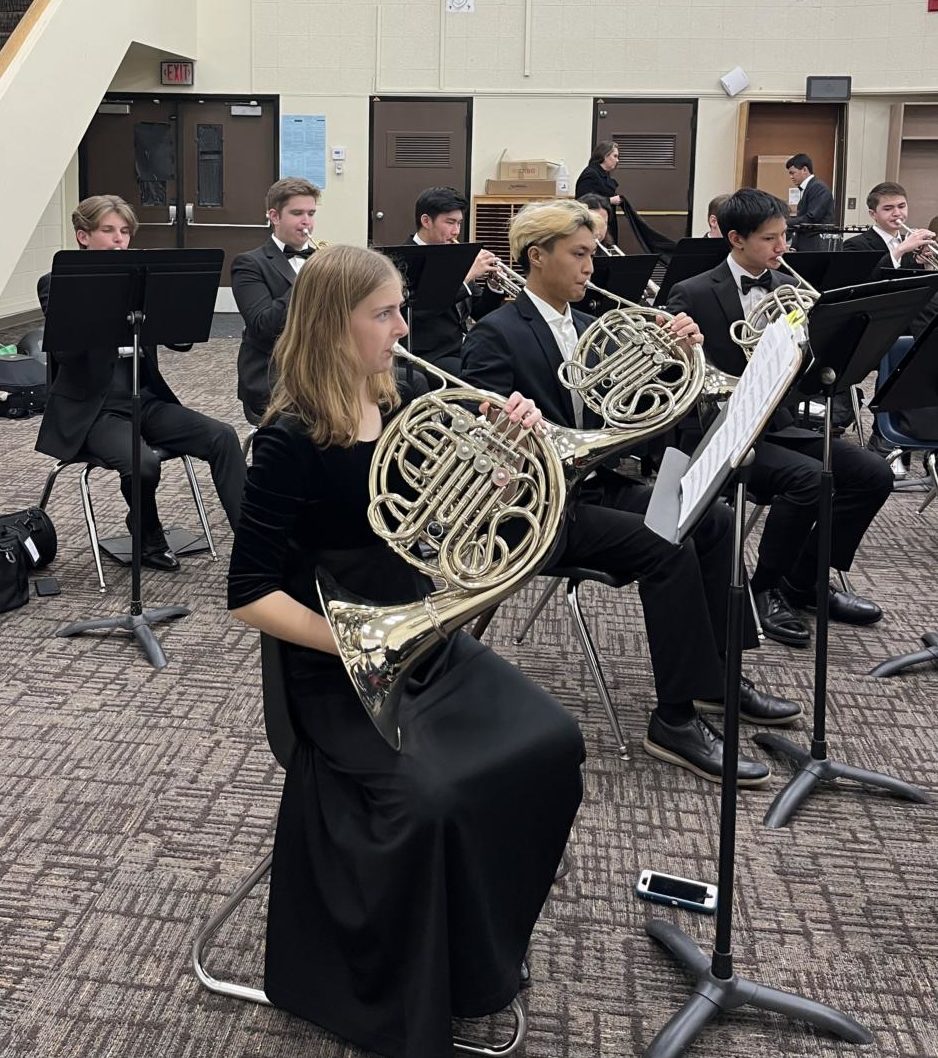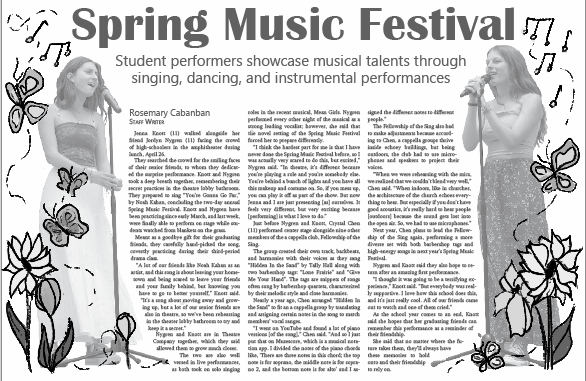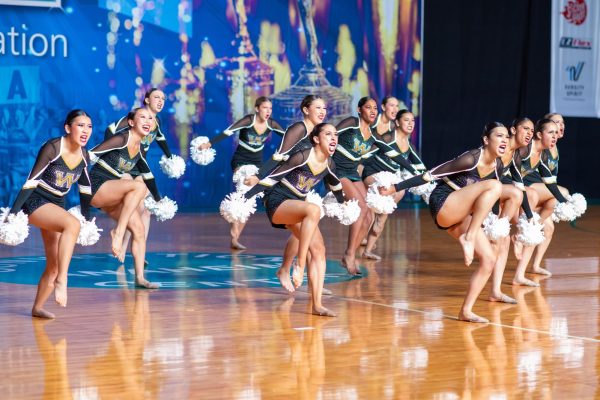GOLD performs at the El Camino Festival
March 17, 2023
GOLD director Mitchell Way walked back to the center of the stage after giving the audience a few seconds to applaud Wind Ensemble for the first piece, “Procession of the Nobles,” composed by Nicholas Rimsky-Korsakov, that they performed. He stepped back onto the podium and raised his arms to count in Aedan Cook-Shen (11), who was supposed to start his trumpet solo on the second beat. But when the moment came, no sound followed. For that split second, everyone in the band’s heart skipped a beat. That had never happened before during rehearsal. Anyone that had been unacquainted with the piece wouldn’t have been able to notice a moment so minuscule, but that one silent beat was able to send a wave of panic throughout the whole band. Cook-Shen said he didn’t even realize he had missed the beat at that moment. But on the following beat, he started his solo and the remainder of it went smoothly—the band was able to quickly adjust and continue the piece as if nothing had happened.

“There was a millisecond where it felt like the entire thing was about to crash and burn, and then the solo started perfectly, and everyone stopped holding their breath,” Calvin Kellenberger (12), who plays the trumpet, said.
At the El Camino Festival, Orchestra performed, March 2. The Concert band, Symphonic band, and Wind Ensemble took the stage on March 3. The festival was open to schools in North County, with 58 performing ensembles that got 30-minute performing slots. The primary purpose of these festivals is not for competition, but as a way for schools to get constructive criticism on their performances. The judges of the event include retired high school and college band directors. Daniel Tran (12), who plays the bassoon in Wind Ensemble, has been a part of GOLD since his freshman year and has a lot of experience with festivals.
“The atmosphere tends to be a little more tense than normal concerts just because more people are nervous about the judging panels,” Tran said.
The Concert and Symphonic bands performed for constructive criticism only, where they didn’t receive a rating, but rather feedback that would be helpful for the future. Wind Ensemble and Orchestra were there “for ratings,” where they would be judged on various parameters including the tonal quality and the blend between instruments. They were also judged on a category of fundamentals, the technique that is shown, and the musicianship category that consists of dynamics and interpretation of the music. Since each band is different, judging becomes stricter or more lenient based on the number of students performing in the ensemble, how long all the students have been playing, the ratio of different instruments, and what type of literature is being played.
“I go in with a little bit of a different mindset [in contrast to concerts] with more attention to detail and making sure that all of the properties that we’ve worked on in rehearsal are there at the time of the concert,” Tran said.
GOLD had less than six weeks to prepare for the festival since, at the end of marching season, Way had to split them into groups: the Wind Ensemble is admitted by audition, the Concert Band has most of the freshmen, and the Symphonic Band has a mix of sophomores, juniors, and seniors.
Orchestra had two fewer weeks with one of their pieces that was composed last year because they didn’t have physical copies of it. Despite this setback, Way said he had no worries about the capabilities of the students. Sophie Ayma (10) plays the violin in the orchestra, and this was her first year participating in a festival.
“It was quite stressful at one point because we weren’t sure if we could pull [one of our pieces] off the way we wanted to,” Ayma said. “But we were able to do it and I think it turned out really well.”
Ultimately, both the Wind Ensemble and Orchestra received “Unanimous Superior” ratings for their performances from each of the adjudicators—this is the highest rating that a group could achieve at this event. After receiving these high marks, Way and the students are looking back at their performance and making improvements. For instance, Wind Ensemble is applying this feedback to their upcoming pieces that are more technically advanced than the prior literature.
“There are maybe 30 people in an ensemble, and it’s my job [as] part of the ensemble [to] take those comments and shape my performance around that,” Tran said. “I won’t be able to carry the entire group. That’s impossible. But I’ll be able to play my role in that respect.”







